 High blood pressure is known as the “silent killer,” because people who suffer from it often don’t even know they have it. Aside from random headaches, there may not be a single symptom at all.
High blood pressure is known as the “silent killer,” because people who suffer from it often don’t even know they have it. Aside from random headaches, there may not be a single symptom at all.
Even more serious is the fact that most people’s blood pressure measures higher in their doctor’s office (called white coat symptom) than at home, triggering doctors to prescribe overused blood pressure medications with deadly side effects.
But not all home blood pressure monitors are created equal. Some result in serious inaccuracy of 10, even 20%, making them completely useless. And pricier is not always better.
There are many monitors out there, so you want to consider what type you are the most comfortable with and choose features from there.
There are two types of home blood pressure monitors widely available: wrist monitors and arm cuff style.
They both measure systolic (top number) and diastolic (bottom number) blood pressure.
The most popular type is the arm cuff monitor. It’s very popular and also, in most cases, extremely accurate. You just slip the cuff on your arm, up around the bicep. Push the button and sit back while it does the rest of the work.
These battery-powered automatic cuffs self-inflate, then deflate in less than one minute, with a clear reading displayed, usually including heart rate.
The other type of monitor is the wrist cuff. It’s much smaller and a lot more portable, which can be handy if you travel a lot for work or other purposes. However, the wrist models have been known to not be as accurate in the past.
Some things to keep in mind:
Don’t buy a used one. There are some things where it’s great to go to a garage sale and pick something up, but blood pressure monitors are not one of those. They’re really economical, so just get one new.
Make sure the cuff size is appropriate. If you get it from the pharmacy or at a department store, sometimes they’ll let you check the cuff to see if it fits well.
While you are there, ask the pharmacy tech to demonstrate it for you or explain it if you have never used one or that kind. It’s important to know you’ll be able to use it and also be able to see the reading clearly.
Some monitors have several additional features. We don’t necessarily recommend that. What you are after is an accurate blood pressure reading and the no-frills monitors do that job just fine. But if you’re concerned about arrhythmias or other conditions those pricier models say they can detect, have at it.
The most important part is to get in the habit of checking your blood pressure two or three times a day, preferably at the same times each day, and that you are rested and sitting when you check your blood pressure. As with all things, be consistent.
Now if your blood pressure is below 120/80 more than 70% of the time, you shouldn’t have anything to worry about. Enjoy your healthy life.
But if you frequently measure your blood pressure above 120/80, especially above 130/90, you need to take action to bring it down. And it can almost always be done without medications.

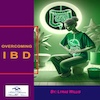 Overcoming IBD
Overcoming IBD Multiple Sclerosis
Multiple Sclerosis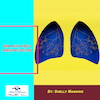 Banishing Bronchitis
Banishing Bronchitis Gum Disease Gone
Gum Disease Gone Overcoming Onychomycosis
Overcoming Onychomycosis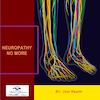 Neuropathy No More
Neuropathy No More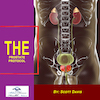 The Prostate Protocol
The Prostate Protocol Brain Booster
Brain Booster
 Ironbound
Ironbound
 Solution for Shingles
Solution for Shingles
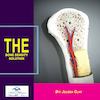 The Bone Density Solution
The Bone Density Solution
 The Ultimate Healing Protocol
The Ultimate Healing Protocol
 The Parkinson's Protocol
The Parkinson's Protocol
 The Chronic Kidney Disease Solution
The Chronic Kidney Disease Solution
 Overthrowing Anxiety
Overthrowing Anxiety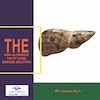 The Fatty Liver Solution
The Fatty Liver Solution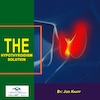 The Hypothyroidism Solution
The Hypothyroidism Solution
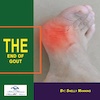 The End of Gout
The End of Gout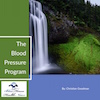 The Blood Pressure Program
The Blood Pressure Program
 The Oxigized Cholesterol Strategy
The Oxigized Cholesterol Strategy
 Stop Snoring And Sleep Apnea Program
Stop Snoring And Sleep Apnea Program
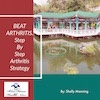 The Arthritis Strategy
The Arthritis Strategy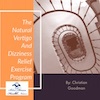 The Vertigo & Dizziness Program
The Vertigo & Dizziness Program The 3-Step Diabetes Strategy
The 3-Step Diabetes Strategy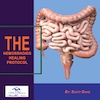 Hemorrhoids Healing Protocol
Hemorrhoids Healing Protocol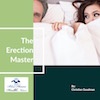 The Erectile Dysfunction Master
The Erectile Dysfunction Master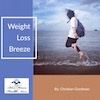 Weight Loss Breeze
Weight Loss Breeze The IBS Program
The IBS Program The Insomnia Program
The Insomnia Program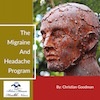 The Migraine and Headache Program
The Migraine and Headache Program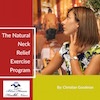 The Neck Pain Solution
The Neck Pain Solution The Menopause Solution
The Menopause Solution The Ejaculation Master
The Ejaculation Master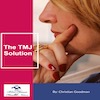 The TMJ Solution
The TMJ Solution The Acid Reflux Solution
The Acid Reflux Solution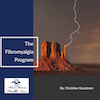 The Fibromyalgia Solution
The Fibromyalgia Solution The Psoriasis Strategy
The Psoriasis Strategy
This is very revealing and educating
Both Dr. David Brownstein and Dr. David Williams report that blood pressure higher than 12080 is advisable for elders. They both reported the higher levels acceptable for seniors in their news letters.
Most people don't know that the AMA in association with Big Pharma. lowered the standard rate JUST to be able to scare the crap out of people and put them on drugs. Many people have slightly higher BP and it is perfectly normal for them. Thanks to Big Pharma for 1. killing more people than any diseas, 2. running and cashing in the biggest scam ever – drugs. They are the true legal drug pushers of the world and most doctors are their pimps.
The curent goal for a healthy adult over 60 is 150/90.
my below post should have read 150/90 or lower.
weak errection